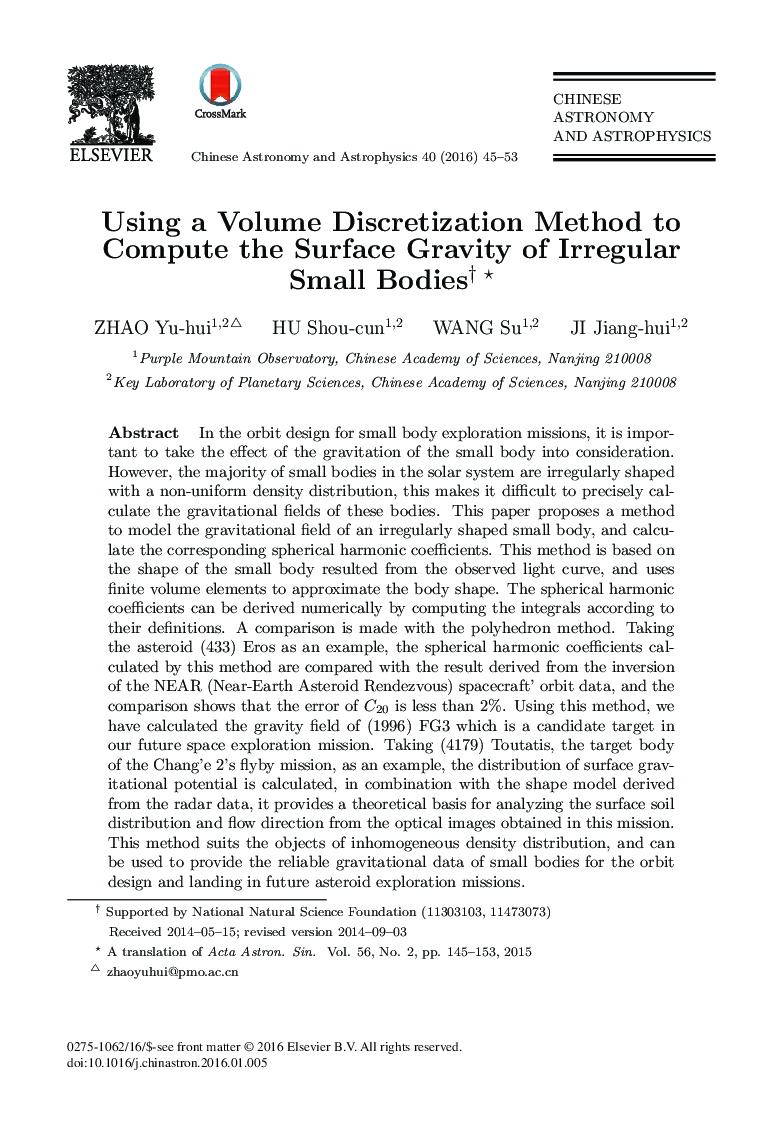| Article ID | Journal | Published Year | Pages | File Type |
|---|---|---|---|---|
| 1771695 | Chinese Astronomy and Astrophysics | 2016 | 9 Pages |
In the orbit design for small body exploration missions, it is important to take the effect of the gravitation of the small body into consideration. However, the majority of small bodies in the solar system are irregularly shaped with a non-uniform density distribution, this makes it difficult to precisely calculate the gravitational fields of these bodies. This paper proposes a method to model the gravitational field of an irregularly shaped small body, and calculate the corresponding spherical harmonic coefficients. This method is based on the shape of the small body resulted from the observed light curve, and uses finite volume elements to approximate the body shape. The spherical harmonic coefficients can be derived numerically by computing the integrals according to their definitions. A comparison is made with the polyhedron method. Taking the asteroid (433) Eros as an example, the spherical harmonic coefficients calculated by this method are compared with the result derived from the inversion of the NEAR (Near-Earth Asteroid Rendezvous) spacecraft’ orbit data, and the comparison shows that the error of C20 is less than 2%. Using this method, we have calculated the gravity field of (1996) FG3 which is a candidate target in our future space exploration mission. Taking (4179) Toutatis, the target body of the Chang’e 2's flyby mission, as an example, the distribution of surface gravitational potential is calculated, in combination with the shape model derived from the radar data, it provides a theoretical basis for analyzing the surface soil distribution and flow direction from the optical images obtained in this mission. This method suits the objects of inhomogeneous density distribution, and can be used to provide the reliable gravitational data of small bodies for the orbit design and landing in future asteroid exploration missions.
